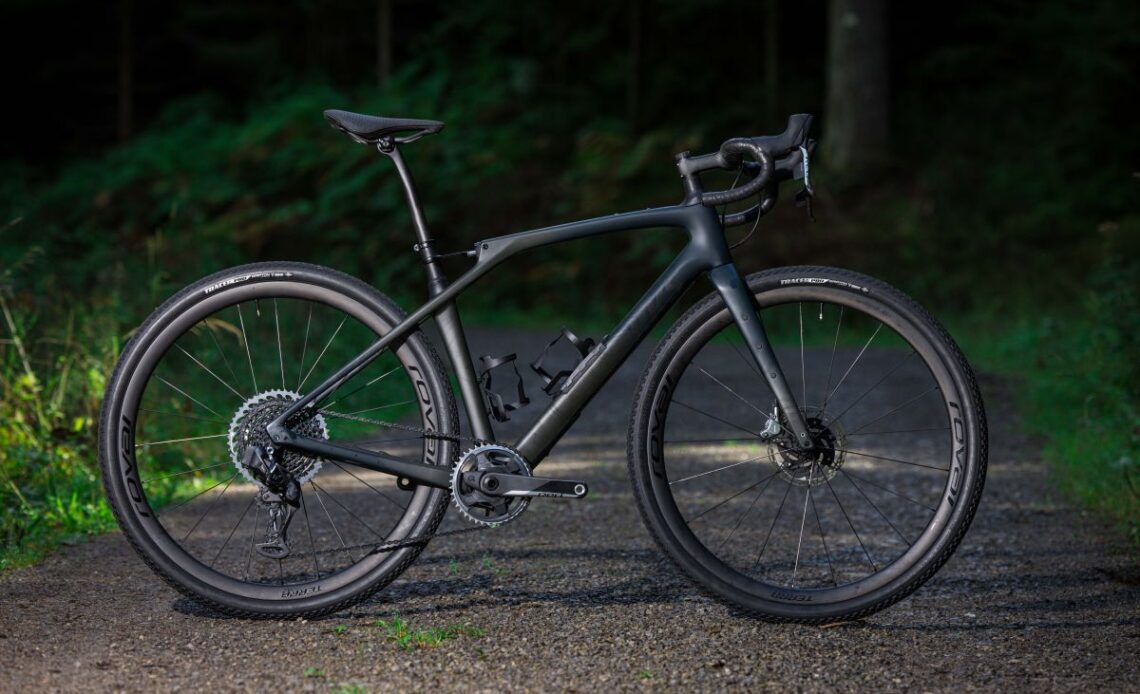Specialized has today unveiled its newest iteration of the brand’s longstanding gravel stalwart, the Diverge STR, which showcases Specialized’s first foray into rear suspension outside mountain bikes.
The Diverge STR features the brand new Rear Future Shock, which offers 30mm of travel accompanied by hydraulic damping – but at a total weight cost of less than 100g for the overall frame.
The STR’s suspension system will be striking to many, with its exposed metallic damper and alloy tendon attaching it to the seatpost, but Specialized assures us that the exposed components couldn’t be more robust.
“It would only fail in fatigue,” explains Specialized’s Creative Specialist, and the brains behind the project, Chris D’Aluisio. “We’ve used the same one in testing for so long, it has gone through millions and millions of cycles. It doesn’t go through enough flex to fatigue. That’s why we have so much confidence in it.”
While the suspension system may look like it’s entirely housed within the top tube, the suspension actually works based on seat tube flex from the bottom bracket – the Rear Future Shock is essentially just the damper for the system.
Behind the scenes, the design has seen many iterations since its initial conception in 2018, but in this final version, the Diverge’s seat tube is essentially free-floating from the bottom bracket – so much so that Specialized has renamed it as the ‘frame post’.
That free-moving leaf-spring design may remind many of the Trek Madone’s 9 series, released in 2015, which employed the rear IsoSpeed in a not-dissimilar way. However, Specialized is keen to stress that a lack of pivots and a damper on the Rear Future Shock separate it considerably from Trek’s system, and Specialized argues it does so in a way that offers more compliance across a wider range of riders.
Trek has recently stepped away from the IsoSpeed on the Madone, and indeed some would argue it’s better deployed on a gravel-focussed bike.
As with the front Future Shock, Specialized offers a degree of tuneability on the Rear Future Shock, with the Rear Future Shock adjustable from the seat collar, which can be twisted into one of three positions. In the open position, it is most active, while in the closed position it is most rigid. The damper can also be adjusted but is typically only set once.
Click Here to Read the Full Original Article at CyclingNews RSS Feed…

